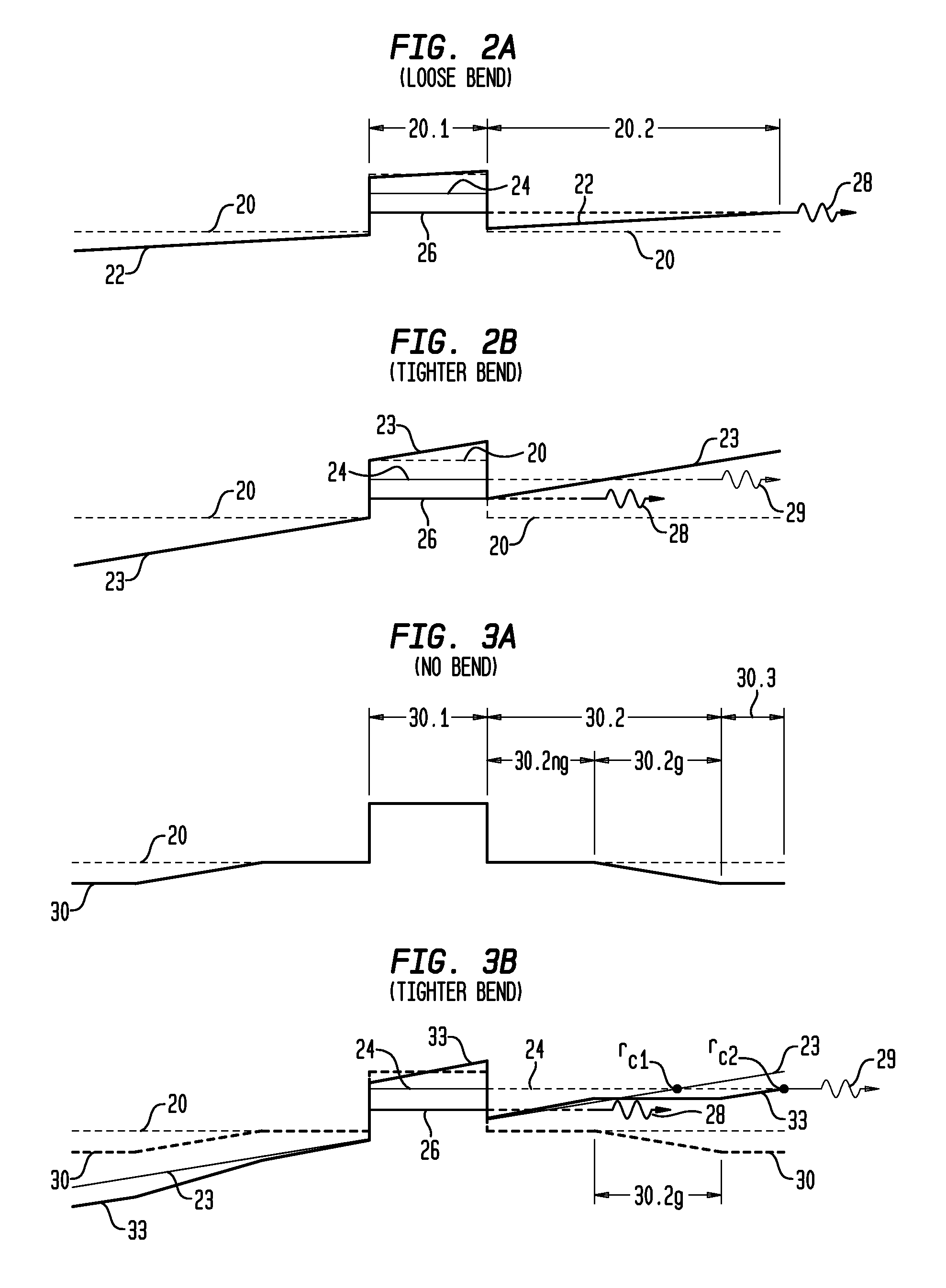Single-mode, bend-compensated, large-mode-area optical fibers designed to accomodate simplified fabrication and tighter bends
a technology of optical fibers and bends, applied in the field of large-mode area optical fibers, can solve the problems of reducing the ability of various fiber designs to selectively suppress homs, limiting the scaling area, and reducing the quality of beams, etc., and achieves the effect of low-cost fabrication and easy fabrication
- Summary
- Abstract
- Description
- Claims
- Application Information
AI Technical Summary
Benefits of technology
Problems solved by technology
Method used
Image
Examples
Embodiment Construction
Bend-Compensated LMA Fibers—General Design
[0069]In this section of the parent application we describe the design of bend-compensated LMA fibers that are configured to be coiled or bent. Thus, at least a longitudinal segment of the LMA fiber is characterized by a bend radius Rb. The coiling or bending of such LMA fibers is often an expedient to save space or satisfy some other physical requirement of a particular application. Typical applications (e.g., optical fiber amplifiers and lasers) will be described in a later section.
[0070]Turning now to FIG. 1A, we show a transverse cross-section of a bend-compensated, LMA optical fiber 10 in accordance with one aspect of our invention. Fiber 10 comprises a core region 10.1, an annular inner cladding region 10.2 surrounding the core region, and an annular outer cladding region 10.3 surrounding the inner cladding region. In general, these regions are configured to support the propagation of signal light effectively in a single mode (i.e., th...
PUM
| Property | Measurement | Unit |
|---|---|---|
| bend diameters | aaaaa | aaaaa |
| bend diameters | aaaaa | aaaaa |
| bend diameters | aaaaa | aaaaa |
Abstract
Description
Claims
Application Information
 Login to View More
Login to View More - R&D
- Intellectual Property
- Life Sciences
- Materials
- Tech Scout
- Unparalleled Data Quality
- Higher Quality Content
- 60% Fewer Hallucinations
Browse by: Latest US Patents, China's latest patents, Technical Efficacy Thesaurus, Application Domain, Technology Topic, Popular Technical Reports.
© 2025 PatSnap. All rights reserved.Legal|Privacy policy|Modern Slavery Act Transparency Statement|Sitemap|About US| Contact US: help@patsnap.com



